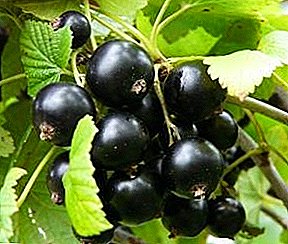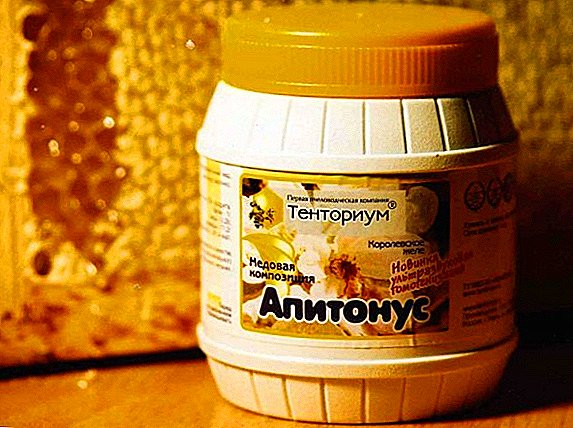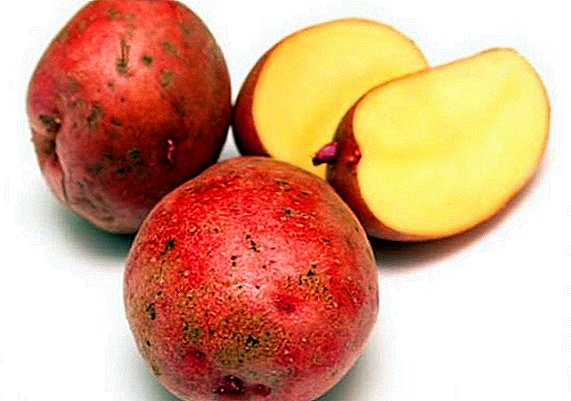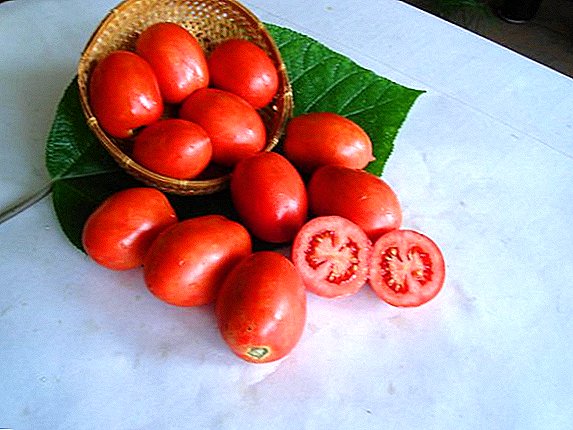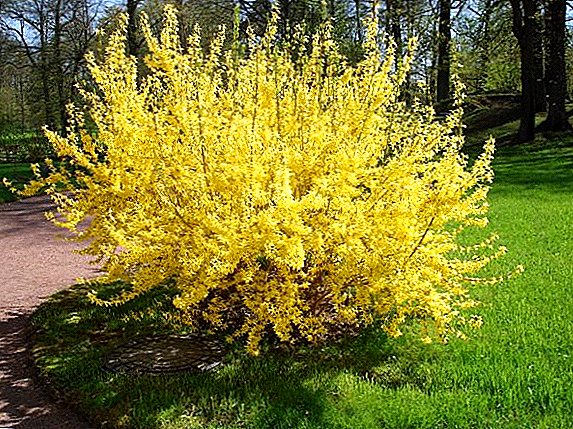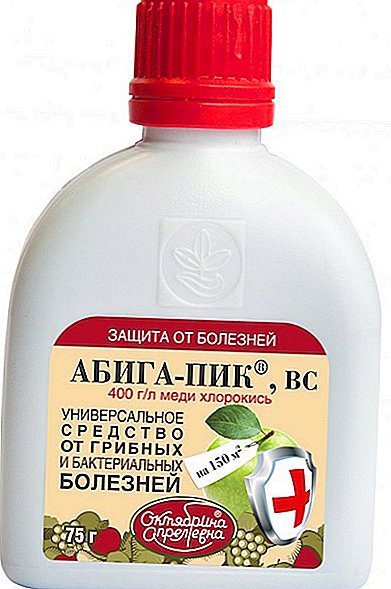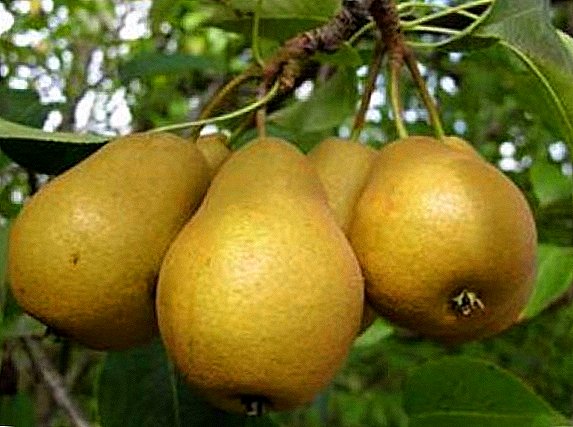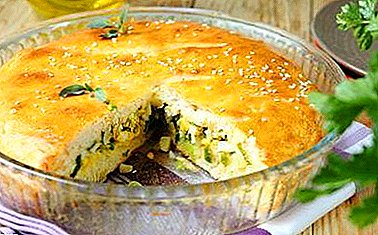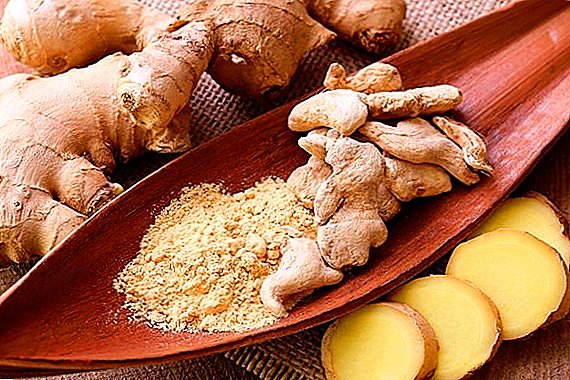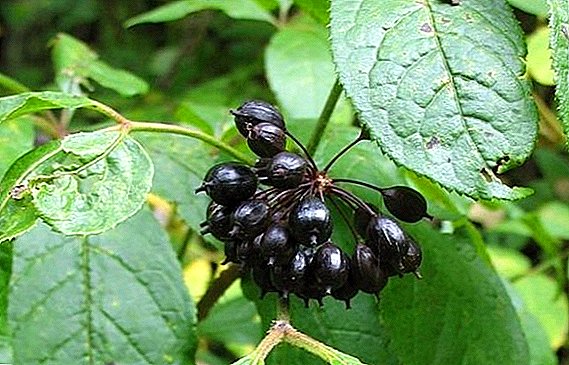 Svobodnoyagodnik, bloody bush, wild pepper, hedgehog, netronnik - this is the name of a plant that has become widespread in both official and traditional medicine.
Svobodnoyagodnik, bloody bush, wild pepper, hedgehog, netronnik - this is the name of a plant that has become widespread in both official and traditional medicine.
With these contradictory, but somewhat similar names, people endowed Eleutherococcus - a beautiful, but very prickly shrub.
Botanical description
Eleutherococcus prickly is a shrub, two to five meters high. It is a prominent representative of the Araliev family. Sometimes it is called Siberian ginseng, but this is not entirely true.  Both plants are from the same family, both are actively used to restore and activate the vital forces of the body. But ginseng is more recommended for men, and Eleutherococcus can be taken by everyone.
Both plants are from the same family, both are actively used to restore and activate the vital forces of the body. But ginseng is more recommended for men, and Eleutherococcus can be taken by everyone.
The Aral family also includes such plants as fatsia, garden ivy, shefflera, ginseng, zamaniha grass.
The roots of the plant are branched, and they mostly spread horizontally around the parent plant. The length of their branching can reach 25 meters.
Stems are light brown or gray, straight, dotted with spines growing obliquely downwards.
The leaves are oval, similar to cherry. They are smooth, or with small thin needles. Bottom along the veins are covered with brown edge. Edge of leaves finely toothed.
Small flowers, their shape resembles umbrellas. Pedicle is tall and thin.  Plants bloom in July-August in purple or cream color. Fragrant berries ripen in September. They are rounded, length 5-7 cm, black. Flat bones are crescent-shaped. Usually their number reaches 5 pieces.
Plants bloom in July-August in purple or cream color. Fragrant berries ripen in September. They are rounded, length 5-7 cm, black. Flat bones are crescent-shaped. Usually their number reaches 5 pieces.
Chemical composition
Eleutherococcus contains:
- alkaloid Aramin;
- flavonoids;
- essential oils;
- coumarin derivatives;
- glucose;
- sugar;
- starch;
- polysaccharides;
- wax;
- resins;
- gum;
- anthocyanins;
- tannins and pectins;
- vegetable fats;
- vitamins (especially vitamin C and carotene);
- trace elements;
- Eleutheroside A, B, C, D, E.

Medicinal properties
It can be used to cure or weaken the manifestations:
- atherosclerosis, diseases of the heart and blood vessels;
- diseases of the nervous system: neurosis, depression, hysteria;
- psoriasis, eczema, wounds, rashes and ulcers;
- asthma, bronchitis, pneumonia.
Learn how asthma, bronchitis is recommended to use plektranthus fragrant, aloe, veronica drug, celandine, grass source, marsh calamus, nasturtium, drug walker.
The range of its impact is extremely wide. These are immunomodulatory, protective, tonic, antiseptic properties - in short, everything that heals and strengthens the body. 
Useful qualities of Eleutherococcus:
- It has a stimulating and activating effect on the central nervous system and immunity;
- restores the body after prolonged exertion, helps to get rid of the constant fatigue;
- accelerates metabolic processes in the body;
- increases the general body resistance to diseases, stresses, environmental conditions;
- enhances motor and mental activity;
- accelerates tissue repair after surgery and injury;
- normalizes blood sugar and cholesterol levels;
- strengthens and normalizes the functions of the reproductive system;
- has antitumor and anti-radiation effect;
- improves appetite;
- relieves from apathy, breakdown;
- adds visual acuity and hearing;
- eliminates causes leading to insomnia.
It also helps in case of appearance problems. 
Cosmetologists include Eleutherococcus essential oil and extracts from it into creams, lotions, tonics, shampoos, ointments. However, Eleutherococcus can be used independently. If the hair is normal, you can add an extract of Eleutherococcus to a regular shampoo - this will make it healthy, shiny and beautiful.
This plant is also useful for problems with the scalp, namely oily seborrhea. And adding it to the hair mask, along with burdock oil and red pepper, will help prevent hair loss and dandruff.
Medical applications
This shrub is versatile. It is used in both traditional and alternative medicine.
Important! Before taking it is necessary to consult a doctor, especially if other medicines are taken in parallel.

For men
For the stronger sex, Eleutherococcus is just a salvation. This applies not only to enhance the body's defenses, enhance mental alertness, performance, toning properties.
The main advantage of this plant is its ability to increase potency.
It is also possible to increase the potency by using such plants as parsley, anise, cardamom, savory, miner, cotton honey, drone milk.
Taking medications that include Eleutherococcus has a beneficial effect on male power. The recommended dose is once a day (before lunch), 40-50 drops of tincture.
For women
For women, medicinal drugs from Eleutherococcus help to put in order painful and abundant periods, to influence for the better hormones in general and especially during menopause, contribute to conception. 
For kids
Extract of Eleutherococcus 2-3 times reduces the likelihood of SARS. This is especially true of children attending kindergartens. It allows up to 50-70% to reduce the incidence of colds.
Such a drug is suitable not only weakened, but also too impressionable children who are prone to frequent stress. Hyperactive kids and their parents will also feel a change for the better after taking the medication.
The course of admission lasts a month, followed by a break for the same period and a new monthly course. Repeat prophylactic treatment should be 2-3 times a year.
To take, adding for each year of the child’s life, 1 drop of tincture, 3 times a day, half an hour before meals. 
For the whole body
Eleutherococcus activates the body's defenses, strengthens the immune system, resists various diseases, activates mental and physical abilities. He is able to prolong youth and slow down the aging process.
Also, this plant speeds up the metabolism, which has a beneficial effect on the skin, nails and hair.
Did you know? One of the names of Eleutherococcus is "wild pepper" - It arose because it is often used in cooking instead of this spice.

Indications for use
Eleutherococcus is used in such cases:
- hypotension (low blood pressure);
- the initial stage of atherosclerosis;
- vegetative vascular dystonia;
- violation of the menstrual cycle;
- infertility;
- in the postoperative period for the speedy recovery;
- in the treatment of traumatic brain injury;
- diabetes;
- oncological diseases;
- as a prophylactic against viral diseases;
- to increase the severity of hearing and vision;
- to strengthen the immune system;
- seborrhea;
- gum disease, stomatitis;
- neurosis, depressive states;
- treatment of abscesses, ulcers;
- increased fatigue;
- chronic fatigue - both muscular and mental.

Harm and side effect
This plant is able to bring not only benefit.
It can harm people:
- suffering from diabetes (if taken in the form of syrup);
- highly sensitive to drug components;
- hypertensive patients;
- individually not tolerating it.
Side effects can occur in the form of:
- irritability;
- anxiety;
- allergic reactions;
- insomnia and too much activity (if taking Eleutherococcus was in the afternoon);
- failure of the menstrual cycle;
- sleepiness;
- weakness;
- diarrhea.

Contraindications
There are a number of contraindications for the use of "relative" of ginseng.
This list includes:
- hypertension;
- epilepsy;
- heart attack or stroke;
- cardiac arrhythmia;
- heat;
- the "peak" of an infectious cold;
- allergy;
- insomnia.
It is not a contraindication, but it is undesirable to take drugs with Eleutherococcus for women on "critical days", pregnant and nursing. 
How to take Eleutherococcus
The undeniable healing properties of Eleutherococcus are not a guarantee of a cure. You must be able to use them correctly. Among the recipes of traditional medicine are descriptions of decoctions, teas, tinctures from various parts of this plant with additional additives.
Important! Given the invigorating and toning properties of Eleutherococcus, it is important to take it in the morning.
Tincture
It has a tonic and tonic effect on the human body. Tincture can be purchased in a pharmacy, and prepare yourself. 500 ml of vodka should take 100 g of crushed plant roots, mix and insist in a dark place. Duration of exposure - two to four weeks.
The amount of tincture taken depends on the disease:
- with colds, problems with the gallbladder and intestines, inflammatory processes, neurosis, atherosclerosis - 30 drops three times a day half an hour before meals;
- to increase man's strength - 40 drops 1 time a day, half an hour before meals;
- to improve hearing and vision - 15 drops twice a day, half an hour before meals.

It is used for cosmetic purposes:
- for oily skin, dissolve 2 tablespoons of alcohol tincture in 100 ml of water, take orally 15-20 drops 1 time a day in the morning;
- the same solution can be used for masks: you need to lay gauze in several layers, wet it in solution and put it on your face for 10-15 minutes;
- To reduce wrinkles, you need to add 1 drop of tincture to a night cream and apply on face daily.
Store the tincture should be in a container of dark glass in the refrigerator. Periodically it needs to be shaken.
Ointment
For the preparation of ointments (cream) are used in equal parts fresh roots of Eleutherococcus, garlic and lard; all this is mixed and ground in a meat grinder. Used to remove warts.
To remove warts use purslane, stonecrop large, golden brown, white martus, willow, wild garlic, red cabbage.
 The right place for the night smeared with this composition, covered with gauze on top and secured with a plaster. Store ointment should be in the refrigerator.
The right place for the night smeared with this composition, covered with gauze on top and secured with a plaster. Store ointment should be in the refrigerator.Decoction
To prepare the decoction, leaves and roots of the plant are used - 50 mg per 1 liter of water. You can also use powder from these parts of the plant, which is sold in a pharmacy. Boil on low heat for 15 minutes.
A decoction is used for problems with the cardiovascular system, memory, and for general weakness. Take it as usual tea. For taste, you can sweeten with honey. The decoction is used during the day of cooking.
Baths with decoction of Eleutherococcus strengthen the body, tone and invigorate, and the skin after them becomes velvety. However, such procedures can not be done every day - enough once a week. 
Tea
One teaspoon of the dried plant (all its parts are used) is poured with a glass of boiling water, infused for 10-15 minutes. It is taken 2 times a day. It is desirable to make the first reception in the morning, on an empty stomach, the second - in the afternoon.
Important! In the evening, this refreshing drink should not be drunk.
Tea with Eleutherococcus can be brewed with plain black or green tea - which is more to your taste. 
Care and cultivation of seeds at home
A full bush of Eleutherococcus can be grown independently. In addition to appreciable replenishment of the home green pharmacy, it can also become a real decoration of the backyard plot or flower bed near the multi-storey building. Moreover, there is no particular trouble with the landing or with the care.
Choice of location and lighting
Immediately it should be noted that this bush is unpretentious. There are no special requirements for the landing site, but he loves shade or partial shade more than sunny places. As for the soil, it needs loosened, neutral and rich in humus.
The place where the planting is planned is recommended to be dug up, after removing all weeds. 
Substrate and fertilizer preparation
Eleutherococcus can be grown from seedlings as well as from seeds. The second option is more laborious, requires preliminary preparation and takes place in two stages. It is necessary for five months to put the seeds in the wet sand, the temperature of which should be 15-20 ° C.
Then the seeds "move" to the refrigerator, where at a temperature of 0-4 ° C and spend the remaining until planting three months.
It is better to time all the preparatory activities for the beginning of spring.
The soil before planting can be fertilized. For this perfectly suited manure or compost. On one square. meter of land accounts for about 6 kg of manure or 10 liters of manure solution. Or you can make a couple of compost buckets under each bush. 
Sowing and reproduction
Seeds can be sown in autumn or spring. When planting in the fall they are placed on wet sand. In the summer it is watered moderately, not allowing the overmoistening of the soil.
Spring seeds are sown after two stages of preparation for transfer to the natural environment of growth. Deepen seeds into the ground by 2-3 cm. In the first year after planting, not all seeds will ascend.
Most of the land will seem in the second year, or even the third. Then the seedlings and should be transferred to a permanent place. And the bush will please the eye with flowering only in the fourth year after planting. 
Watering, humidity, care
The unpretentious bush practically does not demand special leaving. Usually it is necessary to water the land before planting Eleutherococcus and after the seeds are underground. In this case, a weak solution of potassium permanganate should be used.
Regular watering plant requires only in dry years, usually it lacks rain moisture.
Care is to remove dry branches and flowers, weeding and feeding once a year with organic or mineral fertilizers.
Fertilizers will suit any organic or complex fertilizer "Kemira Universal". To prepare the fertilizer, you need to dissolve 2-3 tablespoons of the complex agent in 10 liters of water. Top dressing is recommended once a season.  With minimal effort and effort, the bush of Eleutherococcus can, for half a century, please the owners of the site with its healing properties and beauty.
With minimal effort and effort, the bush of Eleutherococcus can, for half a century, please the owners of the site with its healing properties and beauty.
Wintering
This representative of the family Aralia frost hardy. It can withstand winter -30 ° C without additional shelter. Such a temperature regime is characteristic of his homeland - the Far East.
And young saplings or seeds sown in autumn should be covered with sacking for the winter or mulched. For this fit sawdust, fallen leaves or white agrofibre.
Diseases and pests
Usually, diseases and pests bypass Eleutherococcus. But in order to prevent the hares or mice from trying to eat its bark during the winter, you can put a special garden net at the base of the trunks or wrap them with agrofiber. 
Harvesting and storage of raw materials
For harvesting the roots of an adult plant are best suited. Its age should be from two years, height - 1 meter and above. The best time for harvesting is the end of September. It was at this time that the plant contains the maximum amount of useful substances.
With the help of pitchforks or shovels (you can use specialized tools, for example, levers with hooks), the roots are extracted from the ground, which is immediately shaken off. Not all roots are dug up: about 15-20% should be left in the ground so that the bush can recover and after 5-7 years it can be used again.
After this, the roots are boiled over. Then dry and damaged parts are cut. After that, the roots are sent to dry in the attic of the house (under an iron roof), under a shed, or in special dryers. 
Here the following conditions must be met:
- the room must be ventilated;
- no direct sunlight should fall on the roots;
- the temperature in the dryers (if this option is chosen drying) should be 60-80 ° C.
Dried raw materials are divided into pieces (their length should be about half a meter), packed in a "breathable" container and stored in a dark, dry and ventilated place.
Leaves can also be used. It is best to collect them before flowering plants - in July. At this time, Eleutherococcus is as saturated as ever with everything useful that it has. Drying and further storage are similar to the procedure with roots. The shelf life of raw materials - 2-3 years.
Did you know? Essential oil of Eleutherococcus is in demand not only in cosmetology. Confectioners use it in the production of soft drinks and sweets. And young leaves are good as seasoning to rice and soy dishes.

Use in landscape design
Lush green bushes will be an excellent background for brighter plants. And when yellow flowers bloom on the branches, it will successfully complement the overall composition. He is good in single and group plantings on the lawn.
He will be able to heal not only the body, but also to warm the soul during its flowering or luxurious fruiting.
It should be noted that Eleutherococcus is not only an excellent doctor, but also an excellent caretaker. If you use his landing around the perimeter of the site, no thief would risk moving over this hedge. No wonder one of the names of this bush - "netronnik" or "bloody bush."
The latter, probably, was given by people affected by thin, growing at an angle to the barrel of needles, which stick into the skin and are difficult to remove.  So, Eleutherococcus spiny - not only beautiful, but also a useful plant. In addition to the aesthetic qualities, its medical benefits are undeniable. It is suitable for all categories of people - both children and adults, and elderly.It is only important to properly use its healing properties.
So, Eleutherococcus spiny - not only beautiful, but also a useful plant. In addition to the aesthetic qualities, its medical benefits are undeniable. It is suitable for all categories of people - both children and adults, and elderly.It is only important to properly use its healing properties.
Feedback from network users




